Pompeii and Herculaneum, the ancient Roman cities frozen in time by the devastating eruption of Mount Vesuvius in 79 AD, continue to captivate visitors from around the world. Guided tours led by experienced archaeologists offer a unique opportunity to explore the well-preserved ruins and uncover the rich history of these remarkable sites. From the stunning frescoes and mosaics that showcase the sophistication of Pompeii’s elite to the poignant plaster casts of victims frozen in their final moments, this tour promises to transport you back to the glory days of the Roman Empire. But the real question is, what secrets will you uncover as you explore these legendary cities?
Key Points
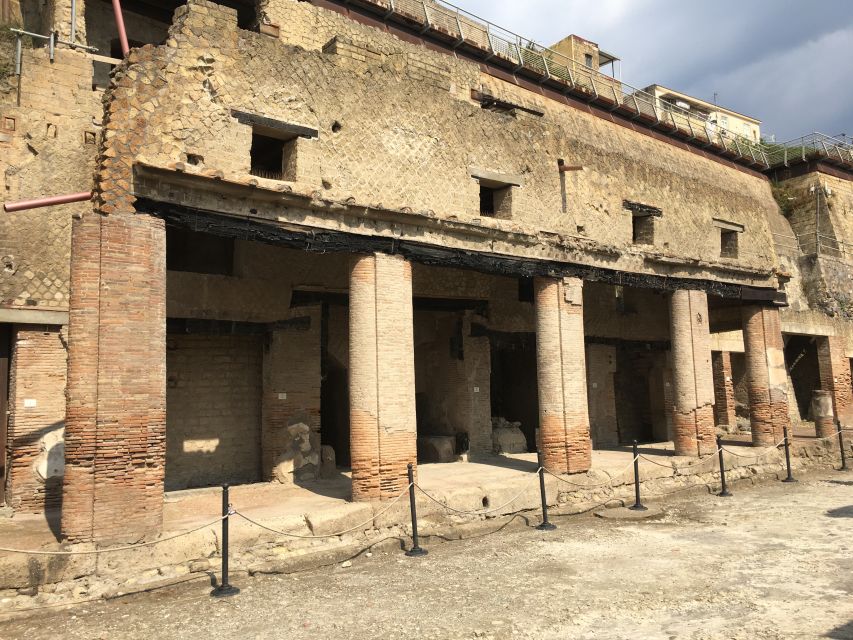
• The guided tour is led by an experienced archaeologist and covers the key sites, well-preserved frescoes, mosaics, and marble decorations in both Pompeii and Herculaneum.
• Visitors can explore the Forum, theaters, ancient houses, shops, and bakeries in Pompeii, and learn about the poignant plaster casts of victims from the volcanic eruption.
• The tour showcases the sophisticated culture and refined tastes of Pompeii’s elite through the exquisite artistic masterpieces, including frescoes, mosaics, and marble decorations.
• Herculaneum, which was buried under layers of volcanic ash, offers a unique opportunity to explore the remarkably intact remains of its lavishly decorated residential areas.
• The tour provides a comparison of the burial and conservation processes between Pompeii and Herculaneum, leading to contrasting states of preservation between the two ancient cities.
You can check availability for your dates here:Overview of the Tour Experience
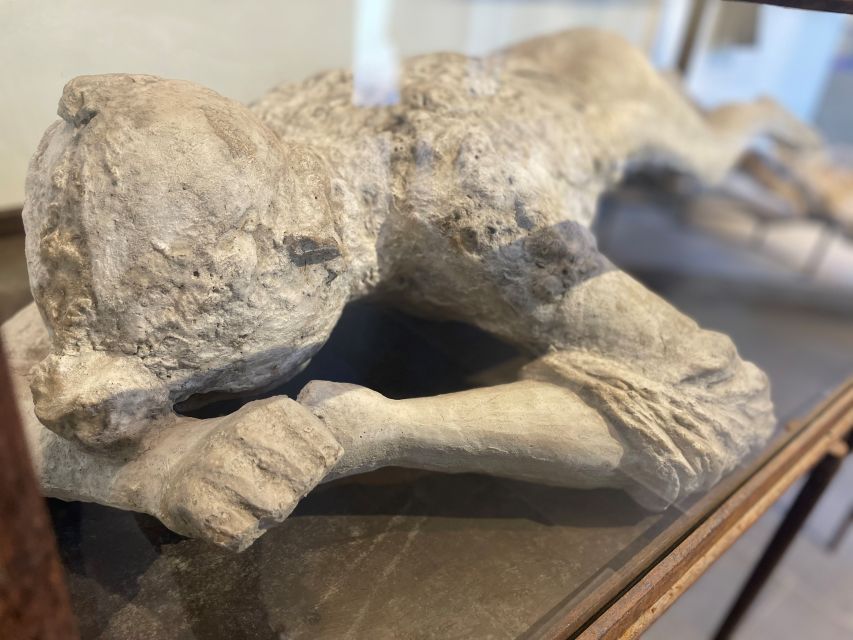
This guided tour of Pompeii and Herculaneum, led by an experienced archaeologist, offers visitors a unique opportunity to explore these renowned ancient Roman cities.
Over the course of 5 hours, you’ll skip the ticket lines and enjoy a live tour in English, Italian, or French, with a small group or on a private tour.
The tour covers the key buildings and sites in both Pompeii and Herculaneum, including theaters, houses, shops, and the iconic Forum.
You’ll see well-preserved frescoes, mosaics, and marble decorations, as well as the haunting plaster casts of victims.
After exploring Pompeii, you’ll have free time for lunch before continuing on to the equally fascinating ruins of Herculaneum.
You can also read our reviews of more tours and experiences in Pompei.
Key Highlights of Pompeii
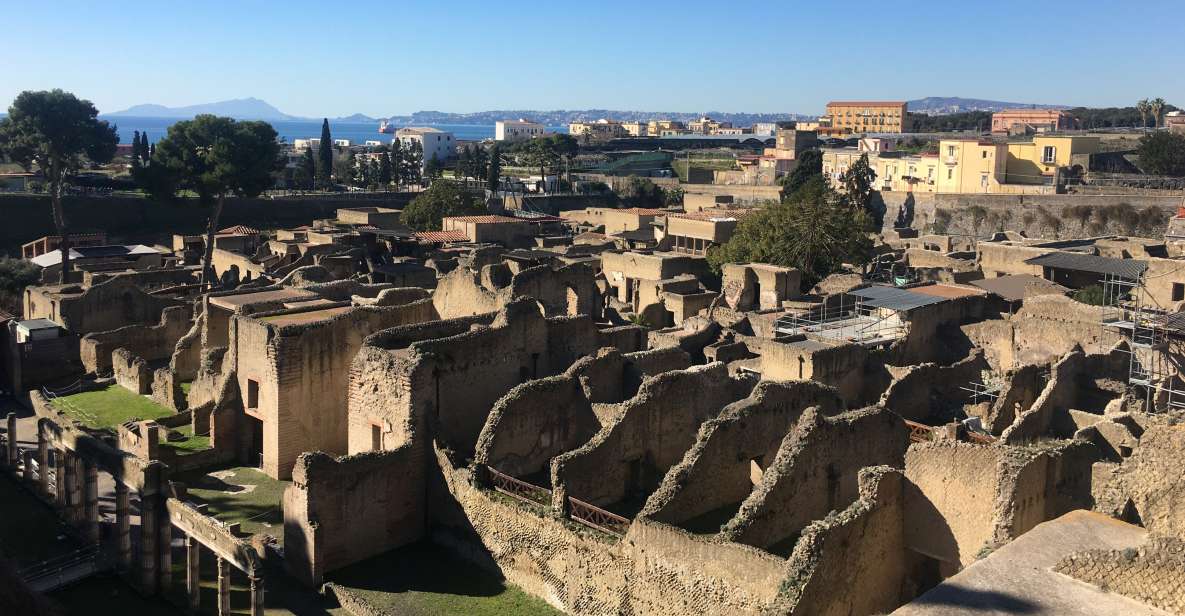
Among the key highlights of Pompeii that visitors encounter is the sprawling Forum, the central public square where civic, religious, and commercial activities took place in ancient Roman times.
Nearby, they’ll explore the remarkably well-preserved ancient theaters, including the Large Theater which could seat up to 5,000 spectators.
The tour also visits ancient houses, shops, and bakeries, where frescoes, mosaics, and marble decorations provide a glimpse into daily life.
One of the most poignant sights are the plaster casts of victims, frozen in time by the volcanic eruption that destroyed the city.
Throughout the exploration, the archaeologist guide brings Pompeii’s rich history to life for visitors.
Frescoes, Mosaics, and Marble Decorations

Pompeii’s ancient homes, shops, and public buildings showcase an abundance of exquisite frescoes, intricate mosaics, and elaborate marble decorations that provide a captivating glimpse into the daily lives and artistic sensibilities of the city’s inhabitants. Many of these decorative elements still retain their vibrant colors and intricate details, offering a window into Pompeii’s golden age.
| Decorative Element | Notable Examples |
|---|---|
| Frescoes | The Villa of the Mysteries, the House of the Faun |
| Mosaics | The Alexander Mosaic, the Mosaic of the Doves |
| Marble Decorations | The Temple of Jupiter, the Lupanar (brothel) |
These artistic masterpieces not only dazzle the eye but also illuminate the sophisticated culture and refined tastes of Pompeii’s elite citizenry.
Plaster Casts of Victims
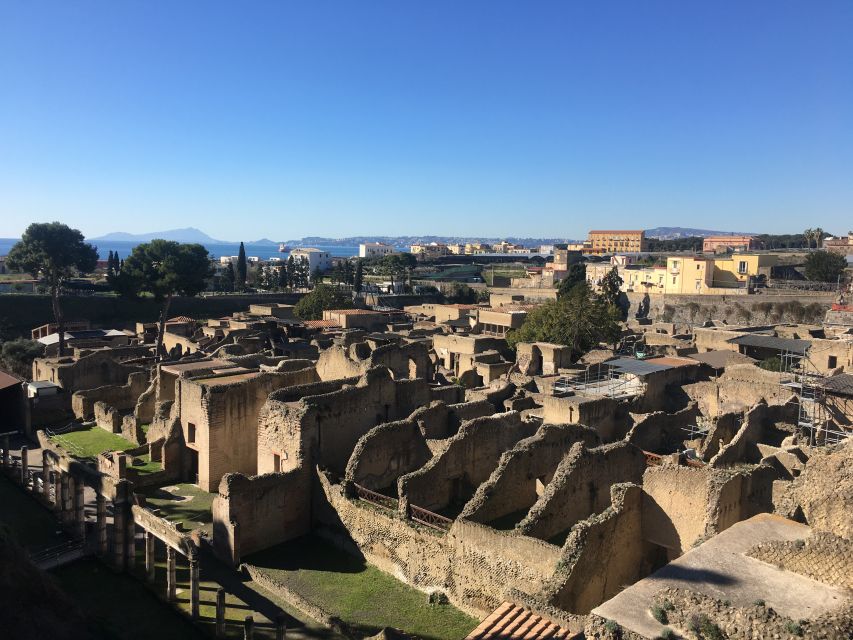
During the excavations of Pompeii, archaeologists uncovered a haunting reminder of the city’s tragic fate: plaster casts of the victims who perished in the volcanic eruption of Mount Vesuvius. These poignant casts, formed by injecting plaster into the voids left by decomposed bodies, capture the final moments of those who were unable to escape the devastating ash and pyroclastic flows. The casts reveal a range of emotions, from terror to resignation, frozen in time. They provide a visceral connection to the past, allowing visitors to empathize with the victims and appreciate the human tragedy that unfolded in Pompeii.
The casts reveal the victims’ final poses and expressions, conveying the horror of their last moments.
Some casts show people trying to shield their faces or protect loved ones, a heartbreaking testament to their struggle for survival.
The level of detail in the casts, such as the folds of clothing and the textures of the skin, gives the victims a startling sense of realism.
The casts serve as a powerful reminder of the devastating power of natural disasters and the fragility of human life.
More Great Tours NearbyLunch Break and Free Time

After exploring the captivating ruins of Pompeii, the guided tour allows visitors a break for lunch, providing free time to refuel and reflect on the morning’s discoveries.
This break offers a chance to grab a bite to eat at one of the local restaurants or cafes, giving travelers a taste of authentic Neapolitan cuisine.
With the freedom to choose their own dining spot, guests can savor the flavors of the region and recharge before continuing on to the next archaeological site.
This break in the tour schedule also allows participants to stretch their legs, take in the local atmosphere, and mentally prepare for the upcoming tour of the well-preserved city of Herculaneum.
Exploring Herculaneum’s Well-Preserved Residences
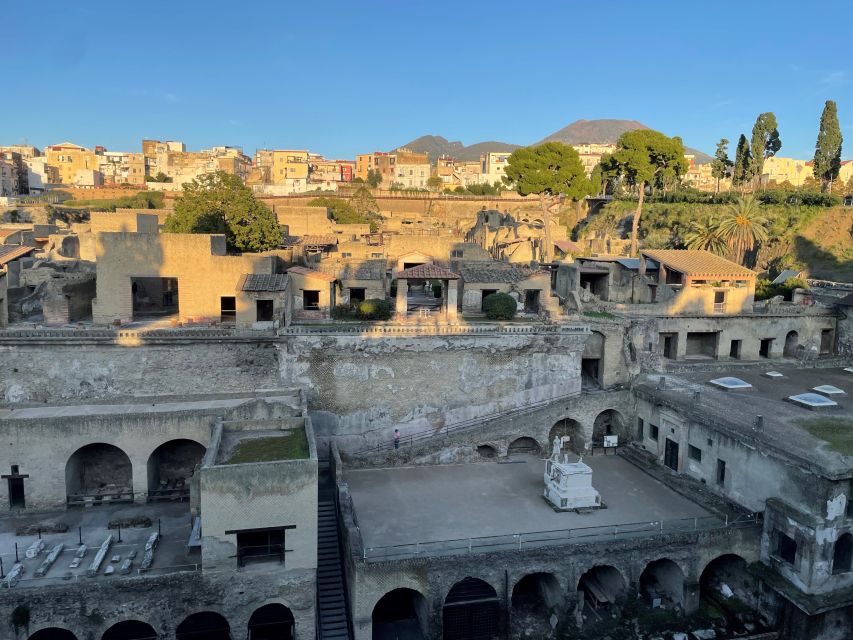
Leaving the captivating ruins of Pompeii behind, the guided tour then explores the well-preserved residences of the ancient city of Herculaneum, offering visitors a unique glimpse into the daily lives of its former inhabitants.
Guests will discover lavishly decorated homes, complete with intricate frescoes, stunning mosaics, and even preserved household items like jewelry.
Unlike the tragic fate of Pompeii, Herculaneum was buried under layers of volcanic ash, resulting in a remarkable state of preservation.
Explore the remarkably intact remains of Herculaneum’s residential areas.
Marvel at the vibrant frescoes, ornate mosaics, and well-preserved artifacts.
Gain insights into the domestic lives of Herculaneum’s ancient residents.
Understand the unique burial process that led to Herculaneum’s exceptional preservation.
Comparison of Burial and Conservation
The burial and conservation processes in Pompeii and Herculaneum differed significantly, leading to vastly contrasting states of preservation between the two ancient cities.
In Pompeii, the victims were buried under a thick layer of volcanic ash, which preserved their bodies in eerie detail. Plaster casts of these victims can be seen during the tour, offering a haunting glimpse into the final moments of their lives.
In contrast, the residents of Herculaneum were buried under a thick layer of superheated mud and volcanic material, which carbonized and preserved many organic materials like wooden furniture, fabrics, and even some human remains.
This difference in burial and conservation has resulted in Herculaneum being considered the better-preserved of the two sites.
Inclusions, Exclusions, and Accessibility
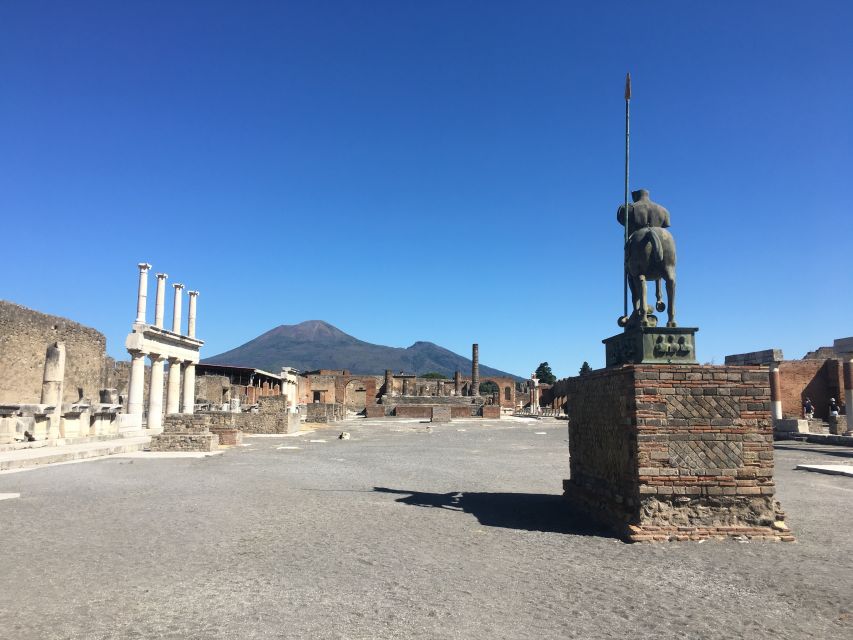
The guided tour includes an archaeologist guide, headsets for groups larger than 8 participants, free time for lunch, and admission fees.
However, it excludes food and drink, and it’s not suitable for people with mobility impairments or wheelchair users.
Some key inclusions and exclusions to note:
- Included: Archaeologist guide, headsets for groups over 8, free time for lunch, admission fees
- Excluded: Food and drink
- Not suitable for: Individuals with mobility impairments or wheelchair users
It’s important to keep these factors in mind when deciding if this guided tour is the right fit for your needs and abilities.
Frequently Asked Questions
What Is the Maximum Group Size for the Private Tour?
The maximum group size for the private tour is 10 people. This small group size allows for a more personalized experience with the archaeologist guide.
Are Entry Tickets Included for Children and Seniors?
Yes, the tour includes admission fees for both children and seniors. The guided tour provides skip-the-line access, ensuring a seamless experience for all participants regardless of age.
Is There Flexibility in the Tour Schedule if Needed?
The tour is flexible and can accommodate changes to the schedule if needed. The archaeologist guide is able to adjust the itinerary to meet the group’s requirements or address any special needs during the tour.
Are There Any Restrictions on the Items Allowed in Pompeii and Herculaneum?
There are some restrictions on items allowed in Pompeii and Herculaneum. Visitors can’t bring large backpacks, tripods, drones, or food/drinks inside. Proper attire and comfortable walking shoes are recommended to fully explore the archaeological sites.
Can the Archaeologist Guide Provide Recommendations for Local Restaurants?
The archaeologist guide can likely provide recommendations for local restaurants near Pompeii and Herculaneum. They’re knowledgeable about the area and may suggest eateries offering authentic regional cuisine to enhance the cultural experience.
Recap
This guided tour offers a unique and immersive experience to explore the captivating ruins of Pompeii and Herculaneum.
Visitors can marvel at the well-preserved frescoes, mosaics, and marble decorations that showcase the sophisticated culture of ancient times.
The poignant plaster casts of victims and the remarkably intact residences in Herculaneum provide a haunting yet fascinating glimpse into the past, making this tour a must-see for anyone interested in ancient history and archaeology.
You can check availability for your dates here:More Guided Tours in Pompei
- Guided Group Tour Pompeii With Archaeologist and Skip Line
- Secrets of Pompeii: Stories and Legends Guided Walking Tour
- Pompeii & Herculaneum: Skip-the-line & App Audio Guide
- Pompeii Half Day Guided Tour – Skip the Line
- Pompeii From Napoli: Transfer + Entry Ticket + Guided Tour
- Guided Tour to Pompeii and Vesuvius From Sorrento
More Tours in Pompei
More Tour Reviews in Pompei
Not for you? Here's more nearby things to do in Pompei we have reviewed
- 25 Best Tours In Pompei
- 25 Best Guided Tours In Pompei
- 3 Best Shore Excursions In Pompei
- 2 Best National Park Tours In Pompei
- 20 Best Wine Tours In Pompei
- 8 Best Cooking Classes In Pompei
- 20 Best Lunch Experiences In Pompei
- 15 Best Walking Tours In Pompei
- 2 Best Dining Experiences In Pompei
- 20 Best Private Drivers In Pompei
- 9 Best Workshops And Classes In Pompei
- 11 Best 2 Hour Tours and Experiences in Pompei
